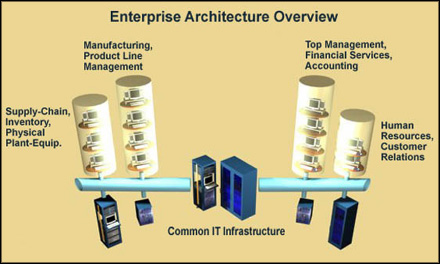The most popular and comprehensive Open Source ECM platform
Business Process Buzzwords — Now SOA 2.0
The acronyms and names associated with business process optimization continue to evolve. There was BPR and Workflow, then SOA and Web Services, and now SOA 2.0 with events?
The late 80’s to the mid-90’s saw the rise of BPR (Business Process Reengineering). Then the idea was that in order to keep pace with a world where the markets and technology are changing so rapidly, company cultures also need to be ever-changing. In 1990 Hammer and Champy‘s book “Reengineering the Corporation” coined the acronym BPR and ignited the popularity of this approach to business. In the mid-90’s, Formtek teamed with Regis McKenna to create seminars that detailed how companies can achieve the benefits offered by BPR.
BPR led to more business thinking that sought to better coordinate processes throughout the enterprise, like the concept of creating an EA (Enterprise Architecture). EA tries to use IT to optimize business processes.

The emergence of Web Services over the last six years has formed the foundation for SOA (Service Oriented Architecture). And with Web Services, a special set of jargon and acronyms have grown up. There are the Web Service protocol names like SOAP (Simple Object Access Protocol — a successor of XML RPC) and REST (Representational State Transfer), and the Web Service method definitions as contained in WSDL (Web Services Description Languages). Microsoft has an extension to WSDL to include business process information called XLANG.
In the world of SOA business process workflow coordination, BPEL has gained acceptance. BPEL manages high-level workflow process state transitions.
SOA has been around already for a few years now, so it seems only natural, for good or bad, that things will continue to change and evolve. This last week Oracle introduced a new suite of tools for EDA (Event Driven Architecture). Oracle and Gartner have coined a new term for an ‘event-driven’ SOA architecture: SOA 2.0. In effect, Oracle is saying that EDA + SOA = SOA 2.0.
While some commentators have said SOA 2.0 is ‘marketing fluff’, or crazy because architectural designs don’t have version numbers, or even have started petitions against it, SOA 2.0 does have merit. The complaints of SOA 2.0 seem to have more to do about the acronym rather than the actual approach. The name seems to have been inspired by the ‘Web 2.0’ name, but people feel that Oracle has hijacked the generic architecture of SOA and is branding it with an Oracle spin.
But looking beyond the naming controversy, SOA 2.0 defines how events and services can provide a more flexible and responsive enterprise IT infrastructure. While ‘standard SOA’ doesn’t preclude the use of event-driven applications, the new SOA 2.0 approach calls out their importance.
With their announcement of SOA 2.0, Oracle now ships a complete middleware stack with new components like their Enterprise Service Bus to route events, a Business Rules engine for defining policies, and an Activity Monitor to analyze events. The EDA pieces supplement Oracle’s already existing SOA offerings which include BPEL and developer tools for integrating processes and creating Web Services.
At Formtek we applaud Oracle for the work that they’ve done in this area. As of late they’ve adopted a standards approach to their new product development and that approach seems to be working well. As an Oracle partner, we at Formtek are excited about being able to provide this new set of capabilities to our customers.
0 comments on “Business Process Buzzwords — Now SOA 2.0”
1 Pings/Trackbacks for "Business Process Buzzwords — Now SOA 2.0"
-
[…] SOA – Services Oriented Architecture — has been around for some time. And recently, it is coming back strong, but with a new name: Microservices and Containers. The idea is that rather than create monolithic applications, create applications by bundling and packaging collections of small self-contained services. […]














